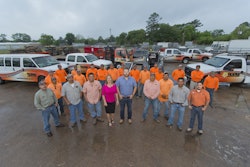
Last issue we talked about the first phase, The Performance Phase. Throughout it a landscape company must focus on developing a strategic plan, transitioning to systems-driven operation, and building out a team as its sales continue to grow. Now we're going to talk about Phases 2 and 3, Profit & Renewal.
Phase 2: Profits & Optimization
Through the successful navigation of Phases 1 and 2, your company is now very good at developing business and delivering services. The focus now turns to improving productivity and efficiency—and driving profitability.
"The Profits Phase represents the optimization of all resources," says Steven Cohen of GreenMark Consulting Group. This means looking at each piece of your company—division, department and crew—as part of a whole. Until now, you've strived to make sure that each piece could operate as effectively and efficiently as possible through the development of systems and standard operating procedures. Now you want to make sure all of the pieces work well together.
"It's important to leverage technology to eliminate waste by automating as many processes and steps as possible," Cohen explains. This helps minimize distractions that prevent employees from focusing on their core responsibilities. When/if technology can't be leveraged, systems and processes must still focus on eliminating waste and driving out "non-value", which are things you and your employees do that customers do not value.
Companies entering the Profit Phase typically achieve gross margins near 60% and invest nearly a third of net profits back into the company. Front-line employees, including crew leaders and account managers, act as the eyes and ears of the company. "Bad news has to move through the company as quickly as good news," Cohen points out. There must be a clear process for gathering and reporting field information and client feedback up the chain of command."
"A company in the Profit Phase is in a constant state of change which is supported and encouraged by staff," Cohen says. "Management should assemble internal teams to conduct a complete systems-based review of the business. It's everyone's goal to make the company better."
Companies in this phase can run into one major stumbling block, indecision, which can result from either of the following: 1) failure to identify the desired "end game" for the business, i.e. sell it, second generation, etc., and/or 2) failure to embrace change and act quickly. Owners must listen to their people and make the necessary changes to keep the company moving forward.
Phase 3: Renewal & Reinvention
These are the established companies everybody knows—and many peers aspire to be like. They are passionate, professional and profitable (the 3 P's). They are innovative, often first to market with new products and programs. In a word, they are leaders.
"The focus during this stage is to further upgrade internal processes to become the lowest-cost producer in the industry," Cohen says. "Management sets up two 'innovation teams,' both of which comprise employees, suppliers, subject matter experts and clients. The internal team focuses on improving the company internally, i.e. operations. The external team is focused on improving service offering through new products and programs."
The important part here has to do with the collaboration inherent through the assembling of diverse innovation teams. "You have real assurance that the improvements will add value and minimize risks," Cohen adds. "Therefore, the changes you make will be well worth the time and investment."
GreenMark Consulting Group's unique three-pronged approach to coaching appeals to landscape/snow companies of all shapes and sizes from around the country. Regardless of which phase your company is going through, GreenMark's offering of Business Toolkits & Virtual Coaching, Live Business Bootcamp Workshops, and Deep-Dive One-on-One Consulting can provide the insights and direction your company needs to thrive. Email GreenMark's Steven Cohen [email protected] to learn more. With 25 years of landscape/snow industry experience, he's eager to speak with you.


![Doosan Bobcat Wacker Neuson Stack 2ec Js Pb V6e[1]](https://img.greenindustrypros.com/mindful/acbm/workspaces/default/uploads/2025/12/doosan-bobcat-wacker-neuson-stack2ecjspbv6e1.CPyyz8ubHn.png?auto=format%2Ccompress&bg=fff&fill-color=fff&fit=fill&h=100&q=70&w=100)








![Doosan Bobcat Wacker Neuson Stack 2ec Js Pb V6e[1]](https://img.greenindustrypros.com/mindful/acbm/workspaces/default/uploads/2025/12/doosan-bobcat-wacker-neuson-stack2ecjspbv6e1.CPyyz8ubHn.png?ar=16%3A9&auto=format%2Ccompress&bg=fff&fill-color=fff&fit=fill&h=135&q=70&w=240)








